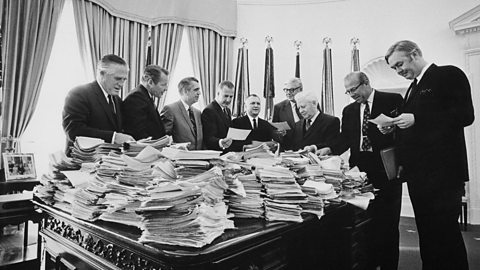Public support for the Vietnam War
Although events such as the My Lai Massacre and the shooting of students brought about increased opposition to the war, there were still many Americans who supported what the government was doing. Some of these people saw it as unpatriotic to campaign against the war when young Americans were risking their lives in the war.
The Hard Hat Riot
Some supporters tried to counter the anti-war movement. One example took place on 8 May 1970. A large group of construction workers assembled in front of Federal Hall in New York, where they also chased and beat students protesting against the Vietnam War.
Manual workers attacked student demonstrators in a number of different places across the city and 70 students were injured. Many eye-witnesses claimed that the police made no attempt to stop the beatings. Only six arrests were made.
These attacks on students by manual workers became known as the Hard Hat Riot because of the protective hats worn by workers on construction sites.
The silent majority
President Richard Nixon saw the Hard Hat Riot as evidence that most of the public did support him but kept quiet about it. In 1969, after a moratorium of 2 million anti-war protestors, Nixon used a televised speech to mention a вҖҳsilent majorityвҖҷ, who he said supported his approach to the war. There is some evidence to support this claim:
- The anti-war movement was relatively small - a couple of million, at its height, in a population of around 200 million.
- People responded to NixonвҖҷs speech - over 50,000 telegrams were sent to Nixon to agree with him.
- opinion pollAn activity in which many people are asked the same questions to find out what most people think about an issue.were positive - one poll showed that 77 per cent of the people surveyed supported the presidentвҖҷs policy in Vietnam.

However, the existence of a silent majority is debated. It is argued that most people only supported NixonвҖҷs policy because he had promised вҖҳpeace with honourвҖҷ, rather than continuing to fight the war.